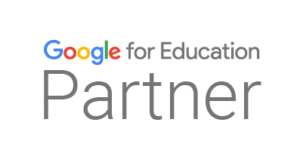Motivation plays a key role in academic performance. Whether students are attending classes online or on campus, they must feel inspired to learn. With monsoon rains disrupting daily travel and the summer heat still lingering, schools are relying more than ever on hybrid and Device-Led Learning models.
These setups allow students to continue their education without breaks. However, maintaining student motivation in this format remains a major concern. Here are practical strategies educators and schools can use to ensure students remain motivated during hybrid learning.
1. Promote Interactive Learning Across All Platforms
The most effective way to keep students interested is by making lessons interactive. Interactive Device-Led Learning means going beyond lectures. It includes using quizzes, polls, digital whiteboards, and breakout rooms. These elements help recreate the classroom energy in an online format. When students actively participate, they retain information better and feel a stronger connection with the subject.
For example, teachers can design group projects that require both in-person and virtual collaboration. This method promotes accountability and teamwork. Using gamified learning tools also supports this approach and ensures lessons remain fresh and exciting. Over time, interactive learning builds consistency and keeps boredom at bay.
2. Create a Routine that Encourages Consistency
Hybrid learning should not feel unpredictable. Students thrive on routine. Schools can support this by sticking to regular schedules. Knowing when to log in and what to expect from a session reduces confusion. It also helps build discipline.
Teachers can help by setting clear objectives at the beginning of every session. Regular check-ins, weekly plans, and feedback mechanisms allow students to stay on track. This approach not only supports undisrupted learning but also shows students that their time and progress are valued.
3. Use Technology to Track Progress and Reward Effort
When students see visible progress, their motivation naturally increases. Teachers can use digital platforms to monitor assignments, attendance, and participation. Regular updates about academic progress encourage students to take ownership of their performance.
Rewarding effort with positive reinforcement also matters. Digital badges, certificates, or shoutouts during classes create a sense of achievement. These small but meaningful gestures boost morale. They show that every student’s effort is seen and appreciated.
4. Focus on Emotional Well-being
The unpredictability of the monsoon and frequent school closures can impact students emotionally. Hybrid learning should offer not just academic but emotional support too. When students feel safe and understood, they are more likely to engage.
Integrating mindfulness activities, peer interaction sessions, and regular breaks can improve overall mental health. Schools can also provide support through counselors and mental wellness sessions. This fosters a nurturing environment that keeps motivation levels high.
5. Personalize Learning for Better Outcomes
Students have different learning styles. Hybrid models offer a great chance to personalize instruction. Teachers can record lessons for students who prefer to revise. Others may prefer live sessions with discussions. This flexibility helps learners absorb concepts more effectively.
Interactive learning tools often come with built-in features that adapt to student performance. This allows teachers to focus on each student’s weak areas and provide customized solutions. Personalization improves attention span, which in turn leads to improved retention rates.
6. Encourage Peer Collaboration
One of the biggest drawbacks of remote learning is the feeling of isolation. Hybrid models can overcome this by encouraging students to work together on tasks. Group activities, peer reviews, and collaborative research help students stay socially connected.
Interactive learning fosters this connection even in digital settings. For example, virtual classrooms can have group chats or forums where students can share their ideas. Such collaboration builds a sense of belonging and contributes to enhanced engagement and motivation.
7. Equip Students with the Right Infrastructure
Reliable access to digital tools is essential for hybrid education to work. Schools and families must work together to ensure students have functioning devices and internet access. Inconsistent tech access can derail learning and reduce motivation.
Also, secure school networks are vital for safe digital classrooms. With cybersecurity threats on the rise, schools must ensure that online platforms are protected. A secure and stable system builds trust among students and parents alike.
8. Keep Parents Informed and Involved
Parental involvement boosts student motivation, especially during hybrid learning. Regular updates, feedback calls, and online parent-teacher meetings help maintain transparency. When parents understand how their children are progressing, they can offer better support at home.
Teachers can also share home-based strategies with parents. This could include reading routines, screen time limits, or even fun learning games. Such partnerships contribute to increased learning effectiveness.
Final Thoughts
Maintaining motivation during hybrid learning isn’t just about keeping students busy. It’s about creating a learning environment that’s interactive, predictable, and supportive. Especially during the monsoon season in Delhi NCR, when school attendance can be affected, hybrid models must serve as more than a stopgap.
With the right strategies, schools can ensure students remain inspired to learn. A blend of technology, empathy, and interactive learning will help education remain uninterrupted, regardless of external challenges. In doing so, we nurture learners who are not only academically prepared but also emotionally resilient.




 1st Floor, H-31, Sector 63,
1st Floor, H-31, Sector 63,